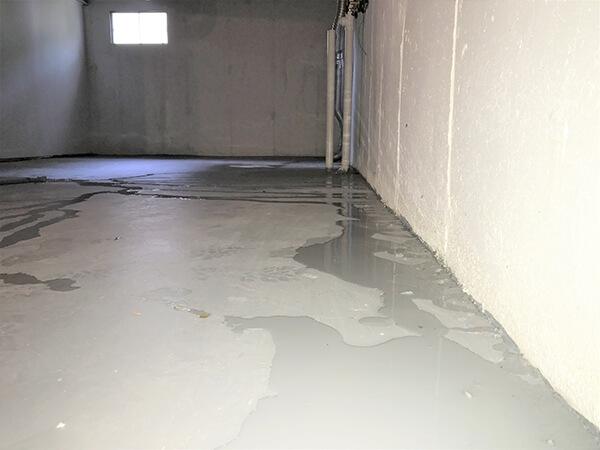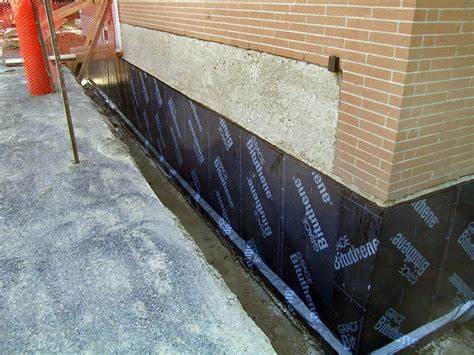The Ultimate Guide to Basement Waterproofing: Preventing Mold, Rot, and Costly Repairs
Wiki Article
Exploring the Numerous Approaches of Cellar Waterproofing and Their Benefits
Basement waterproofing is important for keeping a steady and completely dry environment. Different techniques exist, each with unique advantages. Inside sealants protect against dampness breach, while exterior systems attend to water drainage problems. Sump pumps and French drains pipes take care of water effectively, and dehumidifiers regulate humidity degrees. Recognizing these choices can aid home owners make notified decisions. The appropriate solution commonly depends on specific situations and demands. What factors should one consider when picking the most effective strategy?Inside Sealants: An Efficient Obstacle Versus Dampness
Inside sealants function as a crucial line of protection versus wetness intrusion in basements. These items are made to develop a water-proof obstacle on floors and wall surfaces, properly avoiding water from permeating in. Readily available in various forms, including coatings, paints, and sealers, they can fill up fractures and pores in concrete, making sure an extra secure environment.The application procedure generally involves cleaning the surface areas to eliminate dust and debris, adhered to by the cautious application of the sealant. When cured, these items enhance the resilience of the cellar while decreasing moisture levels, which can cause mold growth and architectural damage.Moreover, interior sealers are often simple to apply and can be a cost-effective option for property owners aiming to mitigate dampness issues. By giving a trusted layer of protection, they play a vital role in guarding the basement area, maintaining both its integrity and functionality.Outside Waterproofing Systems: Safeguarding Your Structure
Outside waterproofing systems supply a durable solution when property owners seek to shield their structures from water damages. These systems normally entail applying water-proof membrane layers and water drainage systems to the outside wall surfaces of a cellar. By creating a barrier versus groundwater, they efficiently avoid moisture from penetrating the foundation (Water Solutions).One noteworthy advantage of exterior waterproofing is its capacity to deal with the source of water breach before it gets to the interior. This positive approach not just safeguards structural stability but likewise boosts the durability of the home.Moreover, outside systems can improve the total drainage around the structure, reducing hydrostatic stress. This reduces the opportunity of fractures and heaving that can arise from water accumulation. Therefore, house owners can delight in a completely dry, stable cellar environment, substantially improving residential or commercial property worth and comfort. Eventually, outside waterproofing systems are a crucial financial investment in maintaining a healthy home structure
Sump Pumps: Taking Care Of Water Accumulation Effectively
Sump pumps play an essential function in taking care of water accumulation in basements, supplying a reliable solution for homes susceptible to flooding or excess dampness. These devices are installed in sump pits, normally located at the most affordable point of a cellar, where they gather water that leaks in from the surrounding soil. When the water level rises, the sump pump activates, efficiently pumping out the excess water to a designated drainage area, thereby preventing potential damage to the structure and indoor spaces.There are two primary types of sump pumps: submersible and pedestal. Completely submersible pumps are mounted undersea, making them much less visible and typically quieter, while pedestal pumps are located above the sump pit and are easier to maintain. By effectively taking care of water buildup, sump pumps not just secure against structural damages yet also contribute to a healthier living atmosphere by minimizing moisture levels and protecting against mold and mildew development.French Drainpipes: Rerouting Water Far From Your Home

Dehumidifiers: Decreasing Moisture Levels for a Drier Environment
Cellar waterproofing involves different strategies, and dehumidifiers play a substantial role in preserving a completely dry atmosphere. By properly decreasing moisture degrees, dehumidifiers assist protect against wetness buildup, which can lead to mold development, architectural damage, and undesirable smells. These tools work by extracting excess moisture from the air, producing a much healthier and more comfortable space.In addition to boosting air top quality, dehumidifiers can enhance the efficiency of other waterproofing approaches, such as sealing and drainage systems. They help maintain excellent humidity levels, usually in between 30% and 50%, which is essential for avoiding condensation on wall surfaces and floors.Moreover, modern-day dehumidifiers are energy-efficient and featured attributes like programmable setups and automated shut-off, making them user-friendly. Overall, incorporating a dehumidifier into basement waterproofing plans provides a vital layer of defense versus moisture-related issues, thereby safeguarding the home's integrity.Frequently Asked Inquiries

How Much Time Do Waterproofing Solutions Generally Last?
Waterproofing options usually last in between 5 to 20 years, depending on the technique utilized, top quality of products, and ecological problems. Normal upkeep and evaluations can assist prolong their efficiency and general life expectancy.Can I Water-proof My Cellar Myself?
The private taken into consideration whether to water-proof the cellar separately. They found that while DIY options exist, knowledge of techniques and products is essential to guarantee performance, and specialist aid might provide better lasting outcomes.What Are the Indicators of Cellar Wetness Issues?
Signs of cellar dampness problems consist of noticeable water spots on walls, musty smells, peeling paint, mold development, and moisture on pop over to this web-site floors. High moisture degrees may additionally show underlying wetness problems calling for interest to stop further damages.Exactly How Much Does Cellar Waterproofing Expense?
The cost of cellar waterproofing varies widely, generally varying from $1,500 to $5,000. Aspects influencing costs include the extent of wetness concerns, the selected approach, and the geographical place of the building.Will Waterproofing Boost My Home's Value?
The question of whether waterproofing raises a home's value usually occurs amongst property owners. Usually, efficient waterproofing can boost property charm, mitigate damage threats, and possibly result in greater resale rates, depending upon the regional property market. By producing an obstacle versus groundwater, they properly prevent wetness from passing through the foundation.One notable advantage of exterior waterproofing is its capability to resolve the source of water intrusion before it reaches the interior. Sump pumps play a vital duty in taking care of water accumulation in basements, offering an efficient remedy for homes prone to flooding or excess moisture. When the water this content degree rises, the sump pump triggers, effectively pumping out the excess water to a marked water drainage location, therefore preventing potential damage to the foundation and interior spaces.There are two main kinds of sump pumps: submersible and pedestal. Sump Pump Installation And Replacement. By routing groundwater and surface area water away from the structure, French drains help avoid water accumulation in basements and crawl rooms, reducing the danger of structural damage and mold and mildew growth.Installation typically occurs around the border of the home, making certain that water is successfully diverted. Signs of basement dampness problems consist of noticeable water spots on wall surfaces, stuffy smells, peeling paint, mold and mildew development, and moisture on floorsReport this wiki page